
TRANSFORMING THE LIVES OF MEN
LIFE AND LIVING WITH MULTIPLE SCLEROSIS
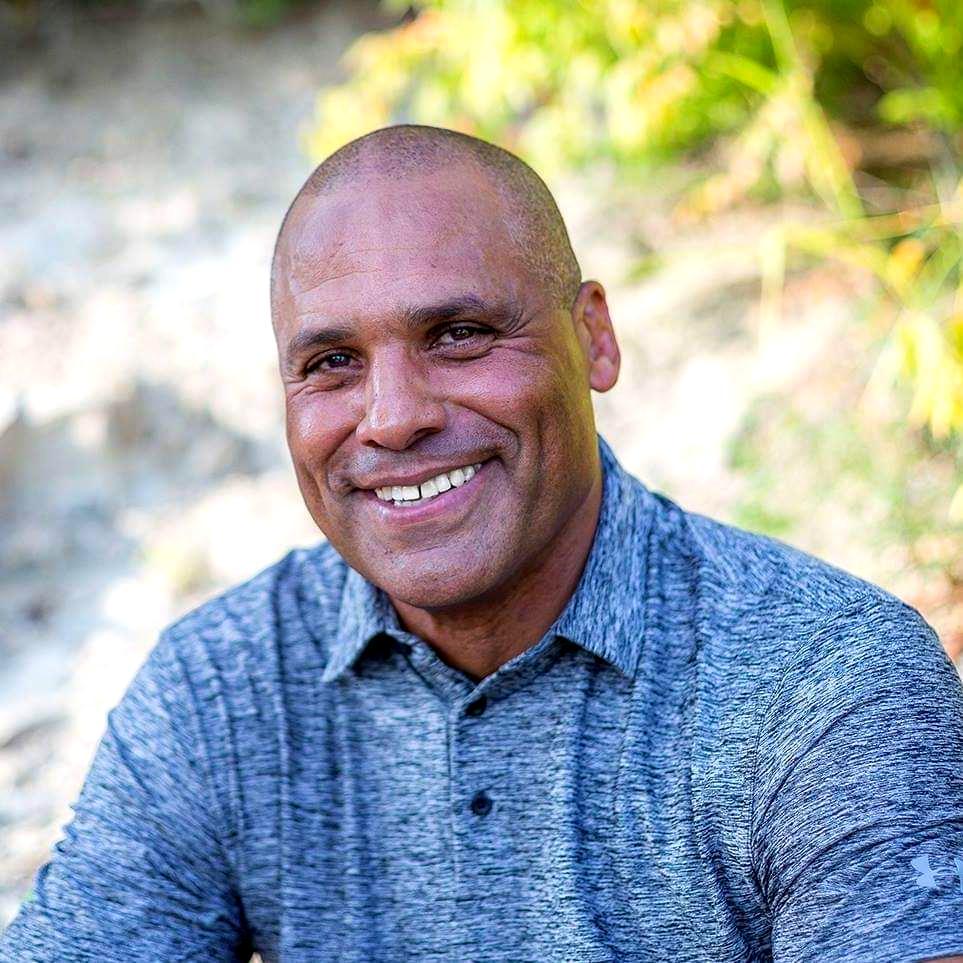
TOP SUVS FOR 2026


TRANSFORMING THE LIVES OF MEN
LIFE AND LIVING WITH MULTIPLE SCLEROSIS

TOP SUVS FOR 2026
Former Kansas City Chiefs football player Art Still discusses life after being diagnosed with cardiac amyloidosis (ATTR-CM), and how he is spreading the word to people across the US about getting tested for the condition.
BONDING WITH OUR TRAUMA
SOMEWHERE
THERE‘S A PLACE FOR
US SUBSCRIBE HERE










MATTERS OF THE HEART
Former Kansas City Chiefs football player, Art Still, discusses life
after being diagnosed with cardiac amyloidosis (ATTR-CM), and how he is spreading the word to people across the US about getting tested for the condition.
14 MOVERS AND SHAKERS
Get to know people who are making a difference in their careers and changing the world!
17 MAN CODES
Instincts.
20 LIFE AND LIVING WITH MULTIPLE SCLEROSIS
Although the impact of Multiple Sclerosis varies for each individual, with effective disease-modifying treatments, a healthy lifestyle, and a strong support system, it is possible to manage symptoms, slow disease progression, and achieve personal goals, including having a normal life expectancy.
33 PROGRAMMED TO SUCCEED
Twyla N. Turner uses her expertise to create winning programming for Black business owners to thrive in the markets they want to thrive in, thus creating a win-win for the United Black Fund and entrepreneurs.
39 CODE M BEAUTY
OUR INCREDIBLE RELATIONSHIP WITH SUGAR
If people are ever going to get into better mental and physical shape, they need to have a better understanding of their relationship with sugar and their health.
Amazing women are refining what it means to be sexy.
48 BONDING WITH OUR TRAUMA
Life is a challenge from the day we’re born and trauma seems to be a part of the package. What if we’re habituated to it?
52 SITTING ON TOP OF CAPITOL HILL
At 36, Christopher Cox managed to live out his dream of working his way to Capitol Hill while serving as the chief of staff at the US House of Representatives. His example is the blueprint of what every man could aspire to.
60 GETTING HER TO HAVE MORE SEX
Intimacy in the bedroom starts days earlier with thoughtful gestures that resonate with your partner mentally, get her in the

It’s funny how you think you’re going in one direction and then life offers you an opportunity and you’re now going in a direction you never conceived of.

mood physically, and allow you to use your manly sexuality to have her begging for more.
66 THE DIVINE 9
Get to know people who are making a difference in their organizations and in their careers.
68 SOMEWHERE THERE’S A PLACE FOR US
What can compare to the piercing sting of a mother's loss of her child? It is a pain that cannot be matched. Barbara Arnold Massey takes readers on a memorable journey to healing from one of the most jarring, devastating moments of her life - the sudden loss of her son, comedian David Arnold.
70 THE WORLD OF BLUES AND BEYOND
In a world of copycat music, nothing seems to last. Jeff Washington changes that with his blend of blues and R&B that feeds the soul and is music to the ears.
72 TOP SUVS FOR 2026
With a new year comes new cars. Here are a few SUVs that stand out among the crowd and fun to look at. Fashion doesn’t just mean what you wear, it also means what you drive.





PUBLISHER
Bilal S. Akram
PRESIDENT
Brad J. Bowling
SENIOR ADVISOR
Alexandria Johnson Boone
MANAGING EDITOR
David Christel
CHIEF OF STAFF
Anita G. Butler
PAGE EDITORS
Laron Harlem-Fashion Editor
Paris Lampkins-Movers & Shakers Editor
Randall Sylvertooth-Tech Editor
Valerie Starks-Hutton-Beauty Editor
GRAPHIC DESIGN
Stiff Arm Media
MEDIA COORDINATOR
Carole Anthony
EXECUTIVE ASSISTANT
To the PUBLISHER
Ladonna “Lala” Dicks
ENGINEER RADIO/PODCAST
Chris Westbrooks
SOCIAL MEDIA
Rachel Woods
IT CONSULTANT
Anthony Jones
Digital Jetstream, LLC
CONTRIBUTING WRITERS
David Christel
Leslie Logan
Brad J. Bowling
Bilal S. Akram
Laron Harlem
Bolling Smith
Garrett Taylor
Latoya Smith
Monique Wingard
Raland Hatchett


To submit comments, feedback or to inquire about advertising please contact us at
info@codemediagroupllc.com
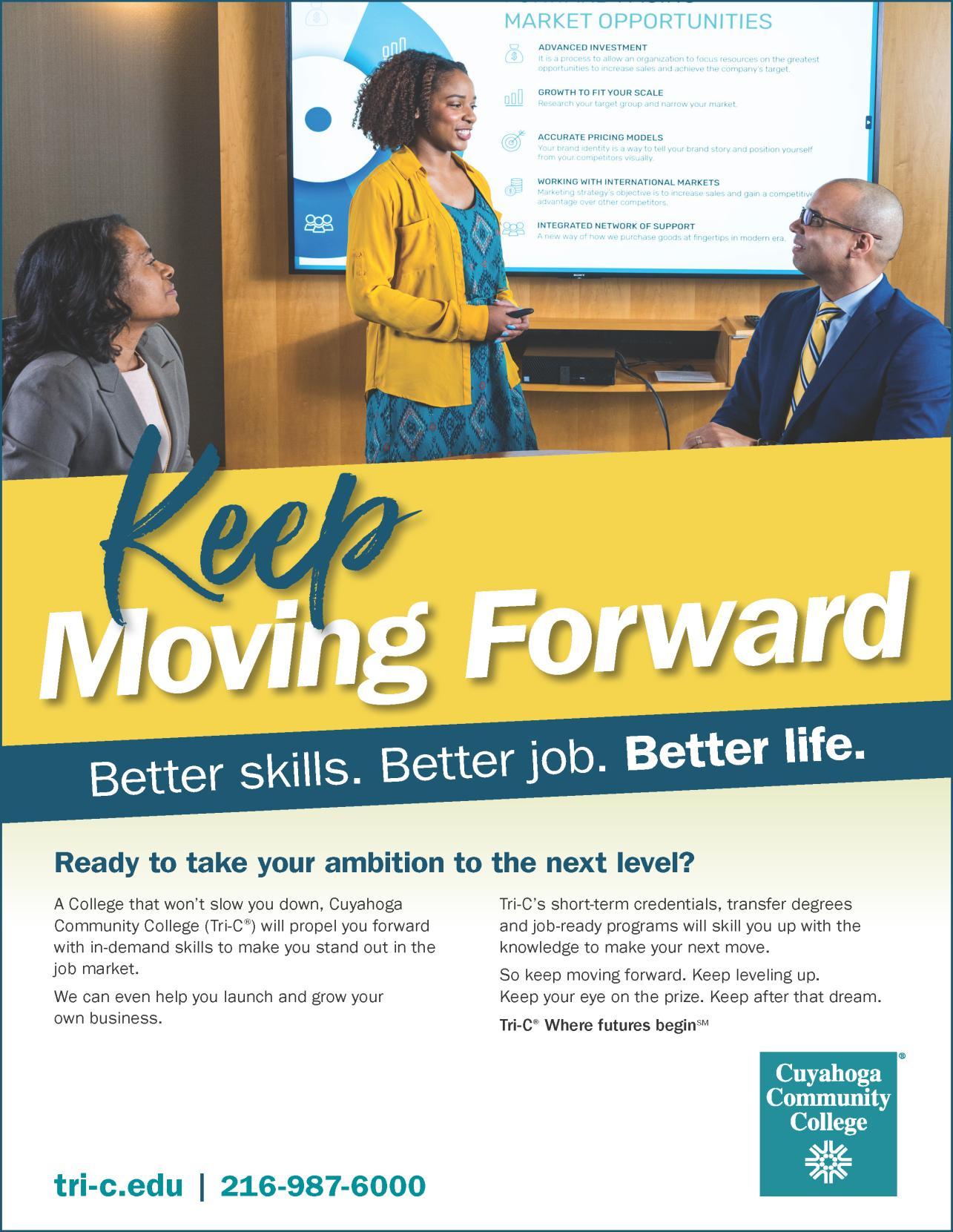


Aswan Harris is a multifaceted entrepreneur, producer, and former Marine Corps Sergeant who thrives at the intersection of business, creativity, and community impact. As Founder and CEO of Limaj Global, he leads a growing portfolio of companies across technology, media, business consulting, and social impact including Quintari, Swanarchy Studios, Cover & Align, and Swantastic. Through Swanarchy Studios, Aswan develops original film, music, and media projects that merge culture with education.
As an actor and stunt coordinator, he brings both creative vision and
Get to know people who are making a difference in their careers and changing the world!
by Paris Lampkins
hands-on expertise to productions. His business consulting work helps organizations optimize operations and achieve sustainable growth through strategic planning and operational excellence.
With Swantastic, his nonprofit dedicated to empowering youth and young adults ages 8–29, he creates opportunities for mentorship, sports, arts, mental health support, outdoor activities, and life skills development. His mission is to help the next generation explore, discover, and thrive while inspiring other entrepreneurs to build with both vision and integrity. A decorated veteran with a background in logistics, leadership, and operational excellence, Aswan brings military precision and creative innovation to every venture.

Brynn Bowling is a future leader in arts and innovation as a 3D animator for TMG Marketing. Her career has seen her produce and work with major commercial brands like Wayfair and Kohler.
The Solon high school resident and graduate of the Cleveland Institute with a major in 3D animation, Bowling is also proficient in storyboarding and AI prompting.
From a young age, Bowling knew she wanted to work in the world of marketing from a design standpoint. In her spare time, she works with start up brands on design execution and user experience design (UX).
Her work in web design and user interface design (UI) is getting her attention from local brands and entrepreneurs.
Her branding designs for helping start-ups is getting her attention from across the United States.
“I love working with new companies that have unique spins on development and growth. Young people are looking to make the world a better place and help them bring their ideas to life,” Bowling said.
Melissa Rodgers is a results-driven manager with a diverse background spanning healthcare, real estate, and operations management.
With over a decade of leadership experience, she excels at guiding teams, streamlining workflows, and building strong client relationships that drive growth and success.
Currently, Rodgers serves as Regional Office Development Manager with Wise Medical Staffing and Home Care, where she leads the launch and expansion of new offices, ensuring compliance and operational performance.
In addition, she is a licensed Real Estate Agent with Key Realty and a proud Realtist with the National Association of Real Estate Brokers, where she actively supports fair housing and equity in real estate.
Rodgers has directed operations, financial management, and staff development. Her healthcare and community work reflect her deep commitment to advocacy and compassion.
At CDCFC Head Start in Columbus, she loved serving as a health specialist, helping ensure that children from low-income families received quality education and health support.
She has also worked in nursing and patient experience roles, always priori-


Bowling hopes to one day start her own company and change the world by introducing a concept that has a huge impact on helping people.

tizing care and compliance.
Rodgers career is defined by leadership, integrity, and a passion for empowering people and communities to thrive.




Compiled by Bilal S. Akram
“Trust your instincts and make judgements on what your heart tells you. The heart will not betray you.” - David Gemmell
“Trust instinct to the end, even though you can give no reason.”
- Ralph Waldo Emerson
“Instinct guides the animal better than the man. In the animal it is pure, in man it is led astray by his reason and intelligence.”
- Denis Diderot
“All the learning in the world cannot replace instinct.”
- Robert Ley
“Follow your instincts. That's where true wisdom manifests itself.” - Oprah Winfrey
“Creativity comes from trust. Trust your instincts. And never hope more than you work.” - Rita Mae Brown
“When you’re great, you trust your instincts. When you’re unstoppable, your instincts trust you.” - Tim Grover
“You can have tons of talent, but it won't necessarily keep you fed. If you have sharp instincts, though, you'll never go hungry.”
- Haruki Murakami
“Instinct leads me to another flow.” - Queen Latifah
Isaiah 11:2-4: (2) The Spirit of the LORD will rest on him the Spirit of wisdom and of understanding, the Spirit of counsel and of might, the Spirit of the knowledge and fear of the LORD (3) and he will delight in the fear of the LORD. He will not judge by what he sees with his eyes, or decide by what he hears with his ears; (4) but with righteousness he will judge the needy, with justice he will give decisions for the poor of the earth. He will strike the earth with the rod of his mouth; with the breath of his lips he will slay the wicked. (NIV)


It’s funny how you think you’re going in one direction and then life offers you an opportunity and you’re now going in a direction you never conceived of.
The spirit of entrepreneurship made itself known to Karl Lawrence from a very early age. He just knew that was the direction he wanted to take in life. That path has led him to launch several enterprises, most recently, that of a distiller of fine whiskey. He is the master distiller and operations manager at New England Sweetwater Distillery, based in New Hampshire. But that’s not where he started.
Karl, born in Montego Bay, Jamaica. His family moved to Florida,

Written by DAVID CHRISTEL
David has been ghostwriting books for well-known people since 1995. He is also the author of Married Men Coming Out: The Ultimate Guide to Becoming the Man You Were Born to Be.
and then in 1982 moved to New York City, where Karl attended high school. He then went on to college in Virginia, which didn’t last long. He met his wife, Alisa, there and they began a family. At that time, now needing to care for his family, his entrepreneurial spirit really kicked in when he opened a restaurant near the Hampton University campus. His entrepreneurial drive was inherited from his strong, hardworking parents and relatives. His father had a record store in Jamaica, and when he came to America, he had his

own grocery store. “My dad’s brother had a grocery store in Florida, and my grandmother had a grocery store in Jamaica. It was the only one in the countryside of the town where she was from, the main store of that area. As a kid, I helped out there.”
Karl’s family was instrumental in instilling in him a strong work ethic, which, upon moving to America, he heavily relied upon. As a person of color, he realized he had to work five times harder in order to move ahead. Though he had the support of his family, he was taught to be independent. “I drew inspiration from my family, but I was on my own, and that’s how I learned to stand on my own two feet.”
Returning to New York after closing his restaurant, he enrolled at Long Island University and joined their radio station. He loved it, and that’s where he discovered his love for the music business. At that time, a good friend of his suggested that the two of them start an artist management company once they graduated from school. “Within a year of starting our company, we found an artist to manage. A year after that, he got signed to a major record label, and things took off from there. I've been doing that now for about fifteen years or so.”
Alisa also worked in the company, and over the years, the two traveled the world, getting to meet people from a variety of backgrounds and cultures, something Karl found very instrumental in broadening his worldview.
As life would have it, though, a thing called COVID arrived in 2020, and everything stopped. It’s also at that time when a new opportunity arrived that sparked Karl’s entrepreneurial spirit: whiskey, a different kind of spirit.
Alisa’s family has a long history of distilling spirits, moonshine, and whiskey in the backwoods of North Carolina. Jump forward to today, and New England Sweetwater Farm & Distillery (NESW) is a family-owned and operated business founded by Robert Patton-Spruill. Robert's passion for distilling was nurtured during childhood summers spent with his grandfather, “Uncle Bob,” who not only taught him the craft of distilling whiskey and moonshine but also instilled the value of prioritizing quality over quantity.
In 2020, the business was passed down to the next generation when Robert’s cousins, Alisa Lawrence and Nilaja Young, purchased NESW. Together, with their spouses, Karl Lawrence and Kenny Young, they embraced the legacy of Uncle Bob, learning
the science and art of distilling.
That was in 2020 and, as the saying goes, the rest is history. Karl, the COO, is the company’s master distiller, though he wears several hats out of necessity. Kenny assists Karl with distilling and is the brand ambassador for the company. Alisa, the CEO, handles all the administrative duties and general management. Nilaja, co-CEO, is a spirits and cocktail specialist who turns Karl’s distillations into ready-to-drink cocktails. It truly is a family affair.
Within a year of taking the reins of the company, Alisa’s parents passed away. With Alisa, Karl, Nilaja, and Kenny keeping the company alive, they are also keeping the family spirit alive as they continue to seek ways to expand their company. They’ve even been winning medals at competitions across the country.
Karl, literally, keeps his creative juices flowing as master distiller, knowing that the horizon keeps shifting. “If you’re the smartest person in the room, change rooms. Don’t let anyone dim your light. If you believe in something, go for it wholeheartedly and don’t regret anything. You’ll make mistakes, like I did, but they’re a part of the process, something to learn from. Work hard, and opportunities will cross your path.”
And that’s the spirit of entrepreneurship. Believe in yourself and don’t take no for an answer. ●



Although the impact of Multiple Sclerosis varies for each individual, with effective disease-modifying treatments, a healthy lifestyle, and a strong support system, it is possible to manage symptoms, slow disease progression, and achieve personal goals, including having a normal life expectancy.


by Leslie Logan


Trty years ago, anyone who contracted Multiple Sclerosis (MS) felt like they were just given a death sentence. Treatments for the chronic autoimmune disease were nonexistent, and the medical community had no answers for those afflicted with the illness.
Today, things are different. Although cases are up, so are the known treatments for MS.
Cases of Multiple Sclerosis (MS) are increasing globally, with both incidence (new cases) and prevalence (total cases) showing an upward trend over the past several decades. This rise is attributed to various factors, including improved diagnostic capabilities, lifestyle changes such as increased obesity and reduced sun exposure (leading to lower Vitamin D levels), and potentially environmental factors like clean living conditions that reduce exposure to parasites that may protect against MS.
Better Diagnosis and Awareness: Improved diagnostic criteria and increased access to specialized neurology services mean that more cases of MS are being detected now than in the past.
Lifestyle Changes:
• Obesity: Higher rates of obesity, particularly in women, are linked to inflammation, which plays a role in MS development.
• Lack of Sun Exposure: Living further from the equator and spending less time outdoors can lead to lower levels of Vitamin D, a factor associated with a higher risk of MS.
• Environmental Factors: Research suggests that cleaner environments and a reduction in parasites, which can modulate the immune system, may contribute to the rising number of MS cases.
• Increased Life Expectancy: People are living longer, both in general and with MS, which also increases the overall prevalence of the disease.
Global Trends:
Data from the Atlas of MS indicates a rising prevalence of MS worldwide.
While rates have increased in many parts of the world, the pattern is not uniform, with some regions showing decreases or
stability in incidence rates.
Treatments for MS include disease-modifying therapies (DMTs) that reduce relapse frequency and disease progression, medications to manage symptoms like muscle spasms or pain, and rehabilitative therapies such as physiotherapy to improve function. DMTs can be given as injectables, oral pills, or IV infusions.
“I used to take one shot a day, but with the advancements in medicine, I am down to only three shots a week,” Tracey Canaztuj said. “That means I poke myself less and I do not have as many sores on my legs as I used to.”
Canaztuj found out she had MS at an early age. The illness took almost twelve years to detect. Her doctors struggled to understand her symptoms, which are different for each person who contracts the disease.
“They really did not know what was wrong with me. They suspected, but it took a very long time to determine that it was MS,” Canaztuj said. “After my diagnosis, I have been working to remain as healthy as I can, but there are days
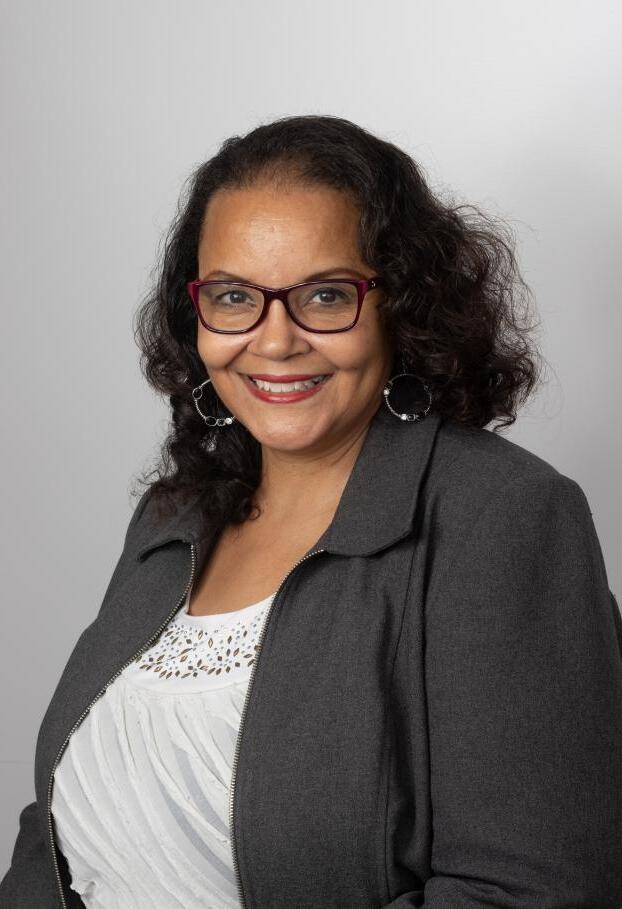

when it can be tough.”
MS is a unique illness because it can produce a catastrophic decline in some people, and in others, it might not impact them at all.
MS is a chronic autoimmune disease where the immune system mistakenly attacks the myelin sheath, the protective covering of nerve fibers in the brain and spinal cord. This damage disrupts nerve signals, leading to a wide range of symptoms including vision problems, muscle weakness, balance and coordination issues, numbness or tingling, and cognitive difficulties.
The exact cause of MS is not fully understood, but it is believed to be a combination of genetic and environmental factors:
• Genetics: A family history of MS increases risk.

• Environmental Factors: Low vitamin D levels, lack of sunlight exposure, and smoking are linked to an increased risk.
• Infections: Certain infections, like the Epstein-Barr virus (EBV), have been associated with MS.
• Other Autoimmune Conditions: Having other autoimmune diseases, such as type 1 diabetes or inflammatory bowel disease, can increase the risk.
With no cure available, treating and reducing the symptoms is the only option.
“No one believed me when I told them something was wrong with me,” Freda Wynne said, “I have had MS for over 20 years, and it has made me a stronger and better person.”
Wynne has accepted her situation and has chosen to thrive through the adversity of the disease. At one point, Wynne could not walk, but she remained strong and worked to overcome any complications that MS presented to her.
The treatment for MS varies depending on the level of symptoms one might have.
While there is no cure for MS, various treatments and therapies can help manage symptoms, reduce relapses, and slow disease progression.
Disease-modifying therapies (DMTs):
Goal: Slow the disease's progression by reducing inflammation and preventing new lesions.
Types:
• Injectable medications: Beta interferons and glatiramer acetate.
• Oral medications: Teriflunomide, dimethyl fumarate, and fingolimod.
• Infusion medications: Natalizumab and ocrelizumab, delivered intravenously.
• Relapse management:
• Corticosteroids: Medications like methylprednisolone are used to reduce inflammation during severe flareups.
Freda Wynne has an amazing support group that supports each other constantly.



• Plasma exchange: Considered for severe relapses that do not respond to steroids.
• Symptom management:
• Physical therapy: Helps with muscle stiffness, balance, and mobility.
• Occupational therapy: Provides strategies for performing daily tasks.
• Medications: Can be prescribed for specific symptoms, such as muscle relaxants for spasticity, or antidepressants for mood changes.
• Lifestyle changes: Regular exercise, a balanced diet, and stress reduction can help improve overall well-being.
Both Wynne and Canaztuj credit having the right mindset as the key to overcoming the difficulties of having MS. Depression is part of the process when dealing with any life-altering situation. Canaztuj credits her ability to take advantage of her perspective when it
comes to dealing with MS.
“For a long time, I did not even acknowledge that something was wrong with me. I just went on with life like nothing was wrong.” Canaztuj continued, “I never defined myself by my illness. MS is not a part of my name; it is something I have, not something I am.”
That mentality keeps her mind strong, thus it helps her battle the daily symptoms of having MS. Today, Canaztuj continues to work, drive, and live life as normally as possible with little progression of the disease.
For Wynne, the process is very similar. She has developed a friend group that is unmatched in support and character.
“I am blessed. I have been able to overcome so much in order to be able to live the life I have today,” Wynne continued, “I know that some days are different than others, but my family, my friends, and my circle are super supportive of me and it allows me to find my purpose and continue to help those less fortunate than me.”
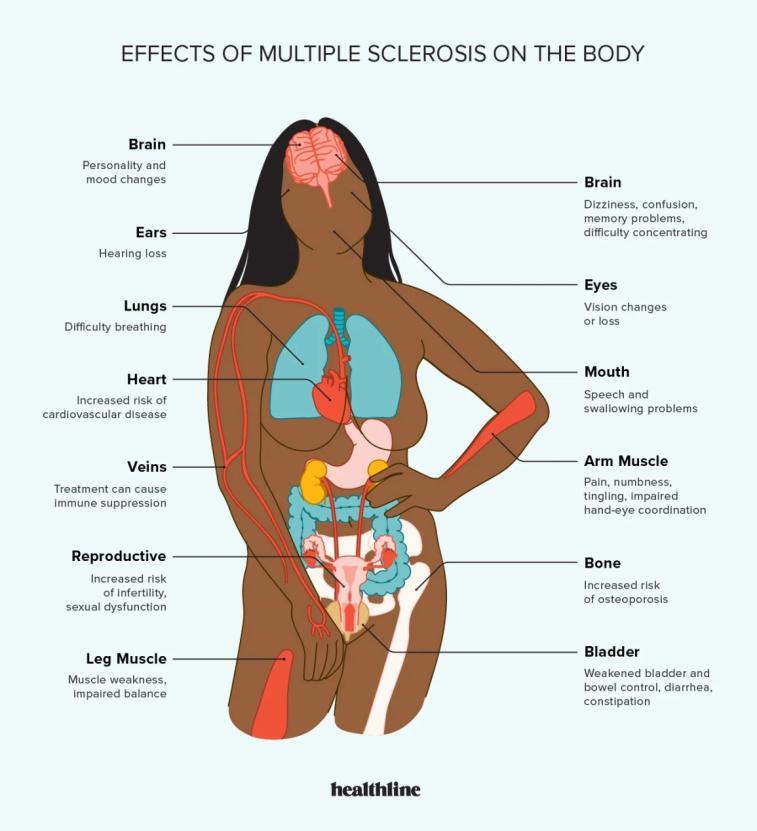
With depression being such a big part of MS, the people who have it often struggle with the slow progression of the disease. So many things can impact one’s ability not to struggle. For those who live in cold climates like Northeast Ohio, it can be especially hard due to the increased side effects of the cold weather.
With so much more known about how to live and treat MS, those who have it are succeeding in ways that allow them to go on with thriving careers and lives. Canaztuj and Wynne are two perfect examples of that, and there are many more like them that exist.
MS is no longer a death sentence if you have it, and if you do have it, the support and treatments are there to aid in the recovery and maintenance of it. Strong women dealing with strong issues are an example to everyone on how to live in the moment and thrive in life. ●
Every person who contracts Multiple Sclerosis experiences different symptom.



If people are ever going to get into better mental and physical shape, they need to have a better understanding of their relationship with sugar and their health.
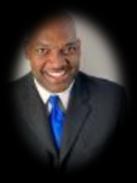
Written by BRAD BOWLING




If you look at photos of the 1950s and 1960s, you’ll notice one common thing: everyone in the picture is slimmer and healthy looking. Pictures of countless people in shape is a thing of the past. Today, it seems like we’re all struggling with keeping our bodies in shape and maintaining a healthy lifestyle. Dieting is a 72 billion dollar-a-year business, yet we continue to get larger and larger.
COVID-19 only exacerbated the problem. When the world stopped, we all stopped, too. We moved less and we ate more.

rides, along with glucose and galactose, that are absorbed directly into the blood during digestion.
Lactose is a disaccharide. It is a sugar composed of galactose and glucose subunits and has the molecular formula C12H22O11. Lactose makes up around 2–8 percent of milk (by weight). The name comes from lac (gen. lactis), the Latin word for milk, plus the suffix -ose, which is used to form the names of sugars.
What needs to be understood about all three sugars is how the body uses them, and how it impacts our daily diets.
There are three types of sugar: sucrose, fructose, and lactose. The three act differently in the body, but all contribute to added calories in your diet and need to be monitored.
That horrible combination has become a huge problem for Blacks, turned it into a pandemic all its own. The problem is that Blacks have an incredible relationship with sugar.
Historically, Blacks consume more sugar that whites. Between 2005-2010, Blacks consumed sugar in over 20 percent of their diet compared to whites at 16 percent. Blacks on average have less options when it comes to eating a sugar-regulated diet than all other races. That, combined with a Black medical history of not being able to tolerate a diet filled with sugar or salt, makes this a huge problem for the community.
“I try to eat as healthy as I can but no matter what I try, nothing seems to work,” said Pamela, from Akron.
The truth is our relationship with sugar is hard to explain. The way it breaks down in our body is one thing. But the other fact is that, simply put, sugar is in everything. So, let’s talk about where it is, and how we can control it better.
There are three types of sugar: sucrose, fructose, and lactose. The three act differently in the body, but all contribute to added calories in your diet and need to be monitored.
Sucrose is common sugar. It’s a disaccharide, a molecule composed of two monosaccharides: glucose and fructose. Sucrose is produced naturally in plants, from which table sugar is refined.
Fructose, or fruit sugar, is a simple ketonic monosaccharide found in many plants where it is often bonded to glucose to form the disaccharide sucrose. It is one of the three dietary monosaccha-
The term “empty calories” comes from the fact that processed sugar, stripped of all its nutrients, does not create the feeling of being full. So, we never become satisfied by eating foods loaded with sugar. Processed foods are the
Americans consume more sugar than any industrialized country.



worst because the body breaks these foods down more quickly than natural foods, which makes our blood sugar levels spike.
If you are going to consume any food with sugar, substitute eating fruits and vegetables. These foods, loaded with fructose, offer a better solution and healthier choice because of the way the body breaks down the natural sugar from fruit. The recommended daily intake is 2 to 3 servings of fruit daily. Taking this action will leave you fuller and create more balance in your diet.
The complicated relationship of sugar in the body is critical to understand if you struggle with illness due to poor diet and weight gain. The ramifications of not watching your sugar intake can be devastating if left unchecked.
African Americans simply need to understand that sugar is slowly killing our race. The damage done from consuming large amounts of sugar is quite dangerous. The most serious issue is organ damage associated with hypertension and diabetes causing retinopathy, nephropathy, and lower-extremity amputations. To date, research suggests that underlying genetic mechanisms may be responsible for the increased frequency of high blood pressure and kidney disease in African Americans.
For Black women, the largest cause of death is heart failure due to obesity. The combination of poor diet and increased sugar intake is the cause of this problem. Sudden Cardiac Arrest (SCA) can be blamed for killing over 50,000 Black women annually and only 48 percent are aware of the high risk associated with diet and lack of exercise.
The consumption of sugar not only causes blood levels to spike, and diabetes and hypertension it also attacks the body’s anti-aging genes. In various chronic diseases these anti-aging genes are deactivated with altered immune responses. This means that the body literally stops or begins to fall apart as we consume too much sugar.
There is no single greater threat to people of color than how much food we con-


sume and, more importantly, how much and what type of sugar. In the US, sugar is used to sell more products, stabilize food, and make everything taste better. As of 2015, there are over 600,000 foods in the American food industry and 80 percent of them contain added sugar.
So, resist the urge to fall prey to your cravings, develop a better relationship with food, and play it smart. The good decisions you make today will positively impact the rest of your life. ●

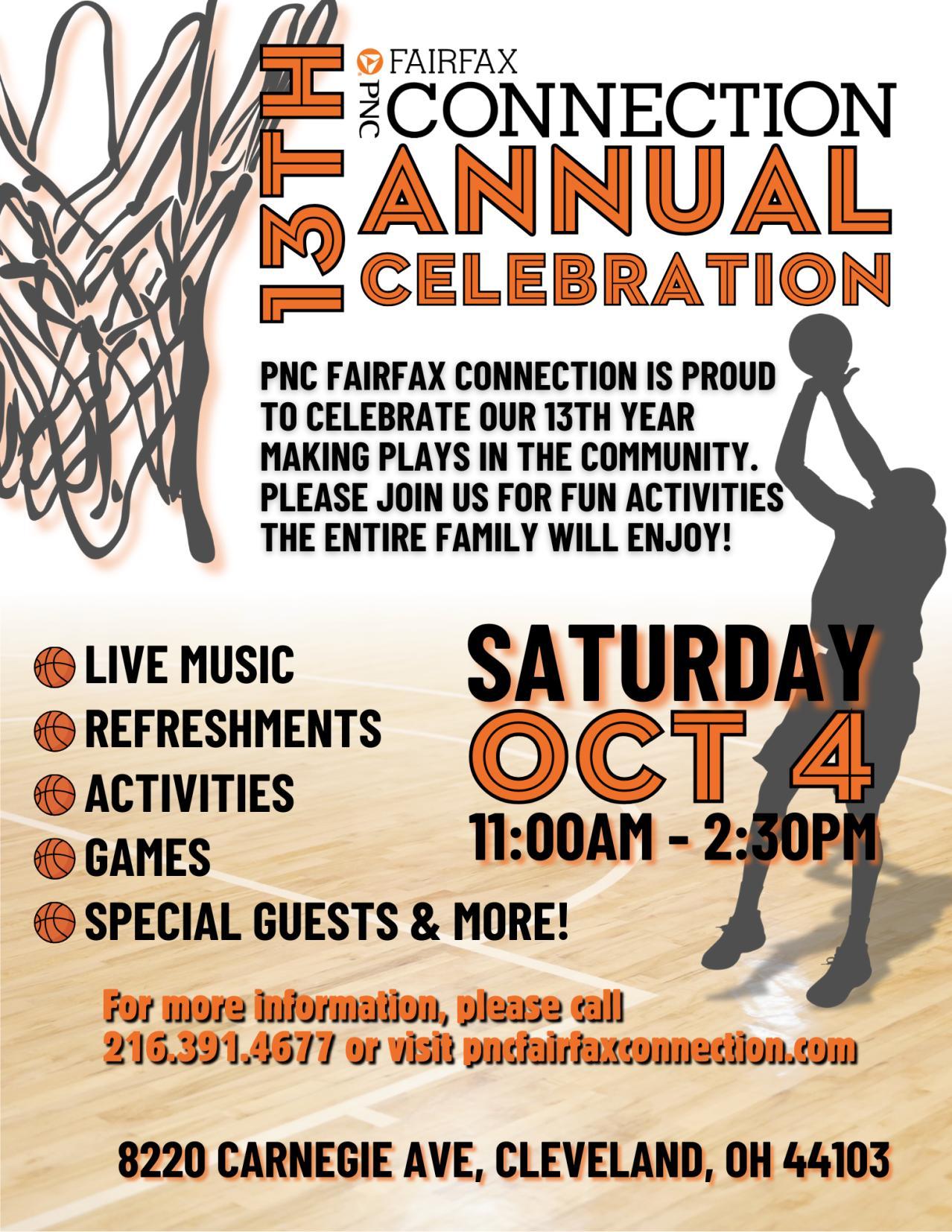

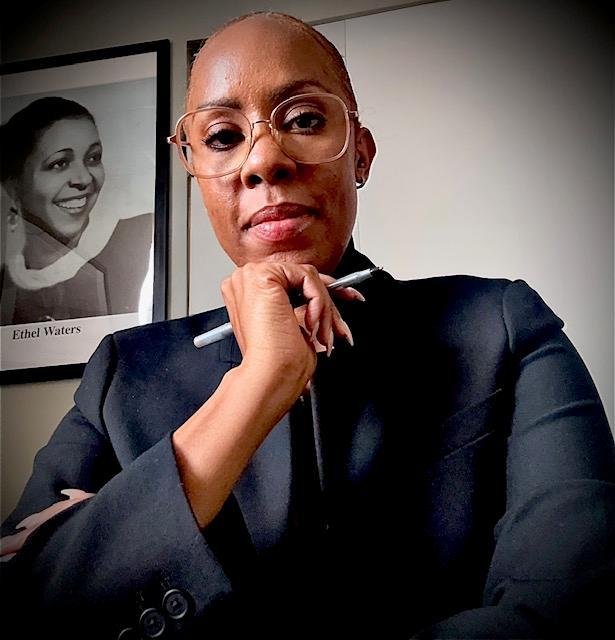
Twyla N. Turner uses her expertise to create winning programming for Black businesses owners to thrive in the markets they want to thrive in, thus creating a win-win for the United Black Fund and entrepreneurs.
Leslie Logan
Entrepreneurship has never been more challenging. Winning as a Black business almost seems impossible today. With funding and opportunities, few and far between, for anyone who hopes to grow their business, you will want to meet Twyla N. Turner, the Director of Program Resources for the United Black Fund (UBF).
The United Black Fund of Greater Cleveland is a legacy nonprofit organization in Northeast Ohio that empowers other non-profits and entrepreneurs through funding, education, and leadership development to make a lasting impact in
Northeast Ohio.
UBF’s Core Values are:
• Community: UBF is committed to uplifting the African American community
• Leadership: UBF empowers visionary leaders driving community change.
• Accountability: UBF acts with integrity and delivers on its commitments.
• Inclusivity: UBF expands access and removes barriers for all.

• Collaboration: UBF fosters trust-based partnerships that honor community voice and expand collective impact.
UBF’s mission has never been more critical to the support and development of those who need help understanding all aspects of business. Turner’s skillset and approach have created a safe place for people to come and seek advice and guidance.
“In our MORTAR Cle Entrepreneurship program we provide a cohort of entrepreneurs with intentional wrap-around support,” Turner said. “We offer coaching to business members of the community because we understand that we have to build the right relationships with our mentees to make sure that they get the kind of support that they can see and feel comfortable in.”
Turner and her team use a coach’s approach to winning teaching to get a stronger buy-in from those who sign up for the program. Trust is a huge factor when attempting something new ,and Turner and her team of entrepreneurship educators build on creating relationships with those that the UBF helps.
“We have coaching in several areas: public relations, technology, legal advice, finance, and business development.” Turner continued, “We try our best to understand the nuances of our community, and we work hard to figure out ways to engage those who take

our courses, so they walk away better.”
And they feel better. The response to Turner’s programs at UBF resonates well with those who have graduated from the training. Leaving the classes with a better understanding of business in general will allow businesses to survive the tough first five years when most businesses shutter.
Turner’s job is to understand what is needed now in business, but her largest challenge is to be able to see around the corner and forecast what will be needed in the future for the businesses that UBF works with.
Turner has also revamped a different program at UBF, the Center for Diverse and Thriving Organizations.
With the current climate in the United States, Turner and her team figured out a way to work around workforce development, specifically for opportunity zones.
“We were fortunate to have a partnership with Cuyahoga County councilwoman, Merdith Turner, who believed in our idea, and she invested in our project, Turner said.
The revamped program creates the space for non-profits to compete in spaces that they ordinarily would not consider. The center provides a lens for its members that they can understand. This provides them with the perspective that they can use to expand their businesses in areas where they ordinarily would not compete.
Turner brought industry experts together to help expose those to take the program to new and different ways to look at workforce development. She expects the program to grow and attract new funders and non-profit leaders to participate in 2026.
Turner and UBF understand that Black businesses are under extreme pressure to constantly find new ways to remain relevant and profitable. With the end of DEI, the reduction of funding in areas where typically minority businesses get funding, it is more important than ever that they discover a new way to create revenue to cover operating expenses.
Turner has found her calling in the role of the Director of Program Resources, and with that, she has found an audience. Business looks good for her and for those who join her programs. Success comes to those who create it. ●
Twyla Turner is the Director of Program Resources for the United Black Fund (UBF).


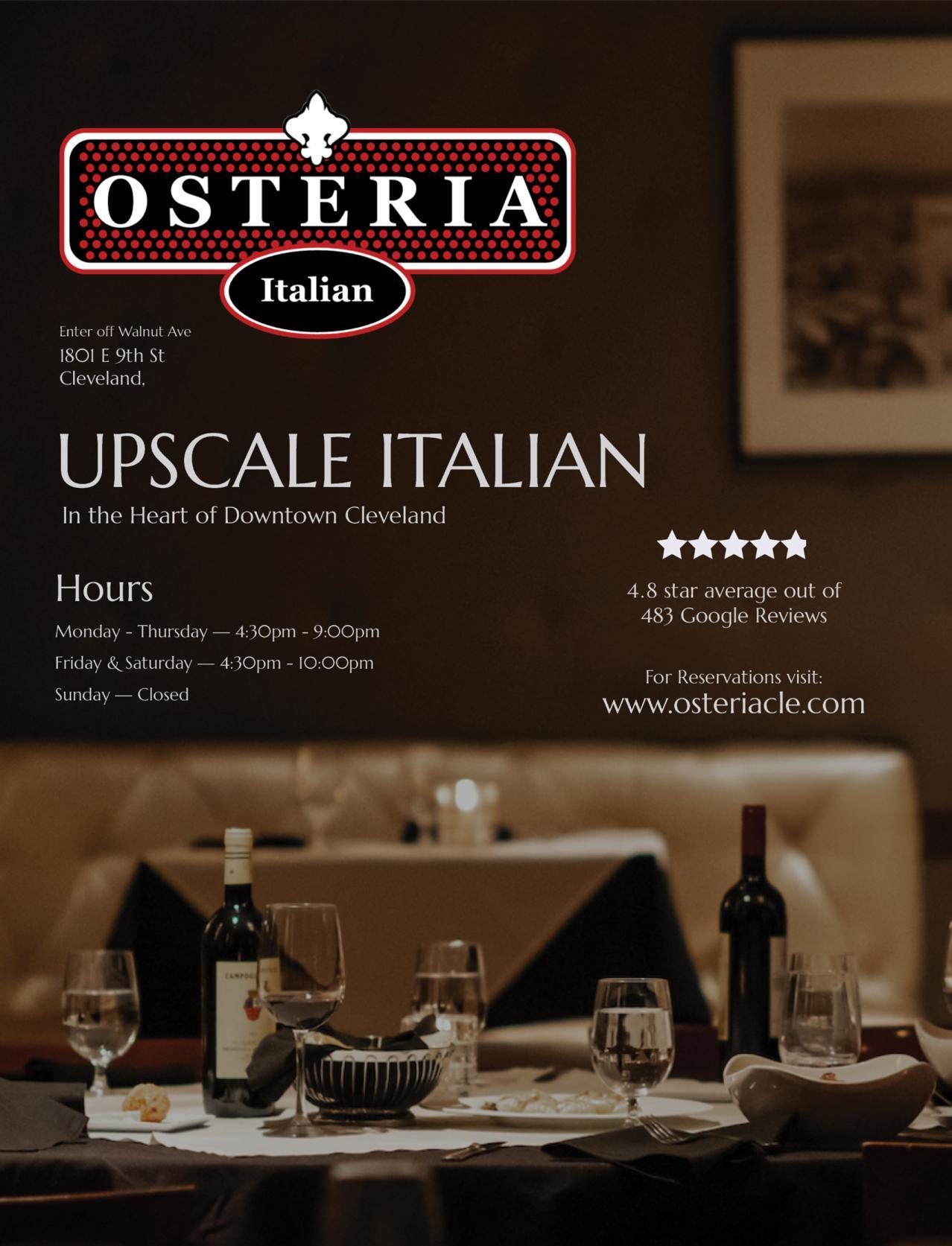


Patrice “P. Nicole” Reynolds is a wife, proud mother of three, and dynamic entrepreneur balancing family, business, and community. She is a topproducing real estate agent with Keller Williams Greater Metropolitan, owner of Reynolds Realty Group and Reynolds Property Management, and founder of InfluenceHer, a nonprofit dedicated to empowering women and young girls. Patrice’s journey is rooted in faith, service, and leadership, and she is passionate about building generational wealth, creating opportunities, and serving as a role model for her children and community.


Former Kansas City Chiefs football player, Art Still, discusses life after being diagnosed with cardiac amyloidosis (ATTR-CM), and how he is spreading the word to people across the US about getting tested for the condition.
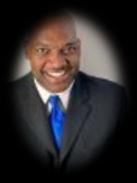
Written by BRAD BOWLING





Life as a professional football player can be hard on the body. Players often refer to playing on Sunday as equivalent to being in a major car accident once a week. For Art Still, playing in the league for over 10 years was an absolute pleasure, but also a nightmare for his body. For Still, it was not just the pain of battling in the trenches that harmed his body; he also had an underlying illness that increased his risk for heart failure.
Still was diagnosed with ATTR-CM. ATTR refers to Transthyretin Amyloidosis, a progressive and often fatal disease caused by the buildup of misfolded transthyretin (TTR) proteins in organs, including the heart, nerves, and kidneys. This protein buildup,

• Other Organ Involvement: Amyloid deposits can also affect the kidneys, brain, and other systems.
There are two different types of ATTR:
• Variant/Hereditary ATTR (ATTRv): Caused by a mutation in the TTR gene that results in unstable TTR proteins.
• Wild-type ATTR (ATTRwt): Occurs due to age-related changes in the TTR protein, typically affecting older adults.
Still has the hereditary type, and so far, over four members of his family have the traits for the disease. Two of his brothers and two of his kids carry the variant trait of ATTR.
Because the symptoms of ATTR can be present in several different areas of the body, at different times, those who fear having the disease need to work with all three specialists to compare and share any data that will aid in the early detection and treatment of the disease.
known as amyloid deposits, interferes with organ function, leading to symptoms like heart failure (transthyretin-mediated amyloid cardiomyopathy or ATTR-CM) or nerve damage (transthyretin-mediated amyloid polyneuropathy or ATTR-PN), and can be caused by inherited genetic mutations or changes that occur with aging.
“I have always watched what I ate and lived a pretty healthy life, but I also noticed that I had several symptoms that led me to believe that something was going on,” Still said. His symptoms started right after he retired. He thought playing football caused some of the numbness in his legs, but after he spoke to his brother, he realized that they both shared the same issues.
Some of the symptoms of ATTR are:
• Cardiomyopathy (ATTR-CM): Stiffening of the heart muscle, leading to heart failure symptoms such as shortness of breath, fatigue, and swelling in the legs and feet. Other symptoms outside the heart often appear several years in advance, including carpal tunnel, bicep tendon rupture and numbness or pain in the lower back (spinal stenosis).
• Polyneuropathy (ATTR-PN): Damage to the peripheral nervous system, causing nerve pain and dysfunction.
Dr. Hansie Mathelier, is a Clinical Assistant Professor of Medicine at the University of Pennsylvania in Philadelphia, Pennsylvania.


Still travels the country to educate people about early detection and how modern medicines can reduce the impact of the disease.
“Right now, I feel amazing, because I am taking the right medications to combat my illness. I also work hard to live the right way. But the medications I take really help me be able to reduce the symptoms of ATTR and thrive,” Still said.
Approved medicines that treat ATTR-CM include stabilizers that reduce disease progression by stabilizing the unstable TTR proteins to limit the misfolding into amyloid. Gene silencer therapies work to reduce the amount of TTR protein produced in the body.
Dr. Hansie Mathelier, a Clinical Assistant Professor of Medicine at the University of Pennsylvania in Philadelphia, Pennsylvania, is a heart failure cardiologist who explains how proteins work in the body.
“The body makes DNA, and the body also makes protein. And the protein in our body needs to fold in a certain way. Sometimes something can happen where proteins misfold and the body does not know how to process it,” Dr. Mathelier said.
Because the body does not know how to process the misfolded protein, it starts to deposit in certain parts of the body. It deposits in the nerves, the GI system, and the heart.
“It’s kind of like a conveyor belt, the body is busy transporting things around inside, but if something is wrong with a cell, the body does not know what to do with it, so the body will begin to deposit the misfolded proteins in areas of the body, unknowingly causing the body harm,” Dr. Mathelier said.
With a disease as difficult to understand as ATTR, early detection and treatments are the key to fighting the symptoms of the illness. Specialists suggest a three-pronged approach to discovering if you have ATTR. It is suggested that you consult with doctors who specialize in:
• Cardiology
• Neurology
• Orthopedics
Because the symptoms of ATTR can be present in several different areas of the body, at different times, those who fear having the
Gensa Clarke has ATTR-CM and is an advocate who helps educate those about early detection.

disease need to work with all three specialists to compare and share any data that will aid in the early detection and treatment of the disease.
“The earlier we detect TTR, the faster we can reduce the side effects of it, and the damage it causes the body.” Dr. Mathelier continued, “Because treatment doesn’t rid the body of bad proteins, early treatments help to curb the issues that arise from having the body deposit the misfolded protein in areas of the body that cause either illness or death.”
You can manage some ATTR-CM symptoms naturally by reducing salt intake, staying hydrated, getting regular, light-tomoderate exercise, and focusing on a heart-healthy diet rich in fruits, vegetables, and lean proteins like fish. However, these methods do not prevent or treat ATTR-CM and should always complement, not replace, medical treatment prescribed by a healthcare provider.
Until six years ago, there were no approved treatments or
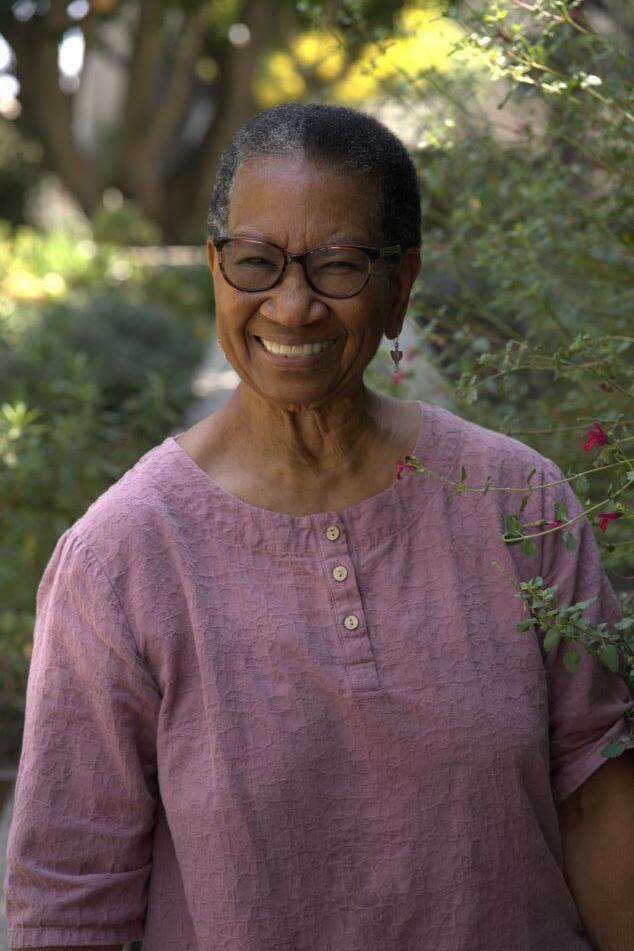

medications to curb ATTR-CM. Today, with the advancements in medicine from the pharmaceutical industry, patients are getting the help they need to live productive lives.
JeShaune Jackson, the director of Strategic Alliances and Patient Advocacy for BridgeBio, works to pair the knowledge of the medical industry with the current patient population so people are aware of the disease and how to access the care they need to treat ATTRCM.
“Three of the most exciting things in the TTR-Cardiac Amyloidosis field for me are;
1) We know that TTR (prealbumin) is an important protein that transports thyroxine and vitamin A, supporting memory, neuroprotection, and cognitive function.
2) ATTR-CM awareness continues to be needed so that patients can be diagnosed sooner and start treatments as early as possible for the best outcomes.
3) We have a global clinical study, ACT-EARLY, to evaluate whether our TTR stabilizer can prevent or delay the onset of disease in individuals with hereditary ATTR and who have not yet developed symptoms,” Jackson said.
If Jackson had his way, he would spread the word to as many families and friends about ATTR-CM and how it disproportionately affects the communities that many people call home.
Jackson is speaking about the Black community. There are numerous ATTR-CM mutations, and they impact communities differently. For the Black community, about four percent of African Americans carry the genetic trait of the disease, which can lead to heart failure.
Of that four percent, the consequences are devastating for those who carry the V122i variant because many Blacks do not know they have the genetic trait. So there is a long period before attempting to treat the disease. No treatment often leads to serious illness or death.
For Gesna Clarke, detection equaled a second chance in life. Her story is not unlike many Blacks who live day to day with the symptoms but

brush them off to a harsh life, or they simply ignore the signs.
For her, the detection and treatment curbed her side effects and allowed her to resume the life she once loved, and has given her the courage to become an advocate for early detection.
“I know how bad it was for me, so I now do whatever I can to help those who may not know that they have it, get the proper care that they need,” Clarke said.
The beautiful thing about life is that it is never too late to get it right. The proof is in those who are beating ATTR-CM with the best treatments in business. With advocates like Art Still, Dr. Hansie Mathelier, Patient Advocate JeShaune Jackson, and Gesna Clarke covering it from all angles, the disease does not stand a chance for those who want help. So, no matter if you are a former professional football player, a doctor, a patient advocate, or a loving mother, your future is back in your hands, and that is all anyone should ever want.
World Amyloidosis Day 2025 will be observed this month on October 26, 2025. ●
JeShawn Jackson, the director of strategic Alliances and Patient Advocacy for BridgeBio, and his father at a recent event.
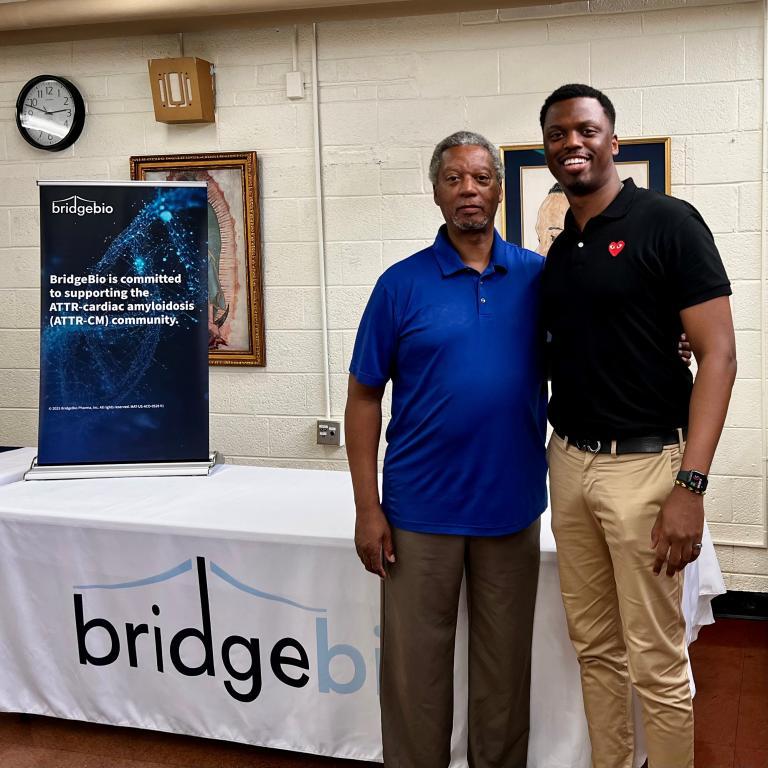


Life is a challenge from the day we’re born — and trauma seems to be a part of the package. What if we’re habituated to it?

Written by DAVID CHRISTEL
Trauma comes in many forms and affects each of us differently. What causes trauma is physical and emotional pain, fear, loss, betrayal, abuse of power, helplessness, confusion, and extraordinarily destructive events.
Dealing with trauma can be complex simply because many people: 1) don’t know how to define what trauma actually is, 2) don’t know the many ways it can occur, 3) are unaware of how far-reaching trauma can be, 4) don’t realize how it can insinuate itself into their lives, and 5) are unable to cope with whatever trauma they’ve experienced.
Trauma is generally defined as any disturbing and/or intensely stressful experience that results in long-lasting negative effects on a person’s attitudes, behavior, ability to function, and overall well -being. In short, it’s any event that psychologically overwhelms a person emotionally and psychologically. That event can be something that happens unexpectedly and suddenly, like a crash or explosion, or could be an ongoing stressor, such as emotional abuse or childhood neglect.
Again, trauma affects each person differently, whether it’s experienced as a child or adult, as an individual or as a group. For some people, their trauma overtakes their lives, such as PTSD (PostTraumatic Stress Disorder). Others turn their trauma into an ongoing relationship scenario from which they find it extremely difficult to extricate themselves. The term for both of these is “trauma bonding.”
Interestingly, some people are more susceptible to trauma bonding. Often, it’s people with low self-esteem, those who grew up in an atmosphere of fear and uncertainty, children who were abandoned or ignored, and those who witnessed a traumatic event that was never appropriately


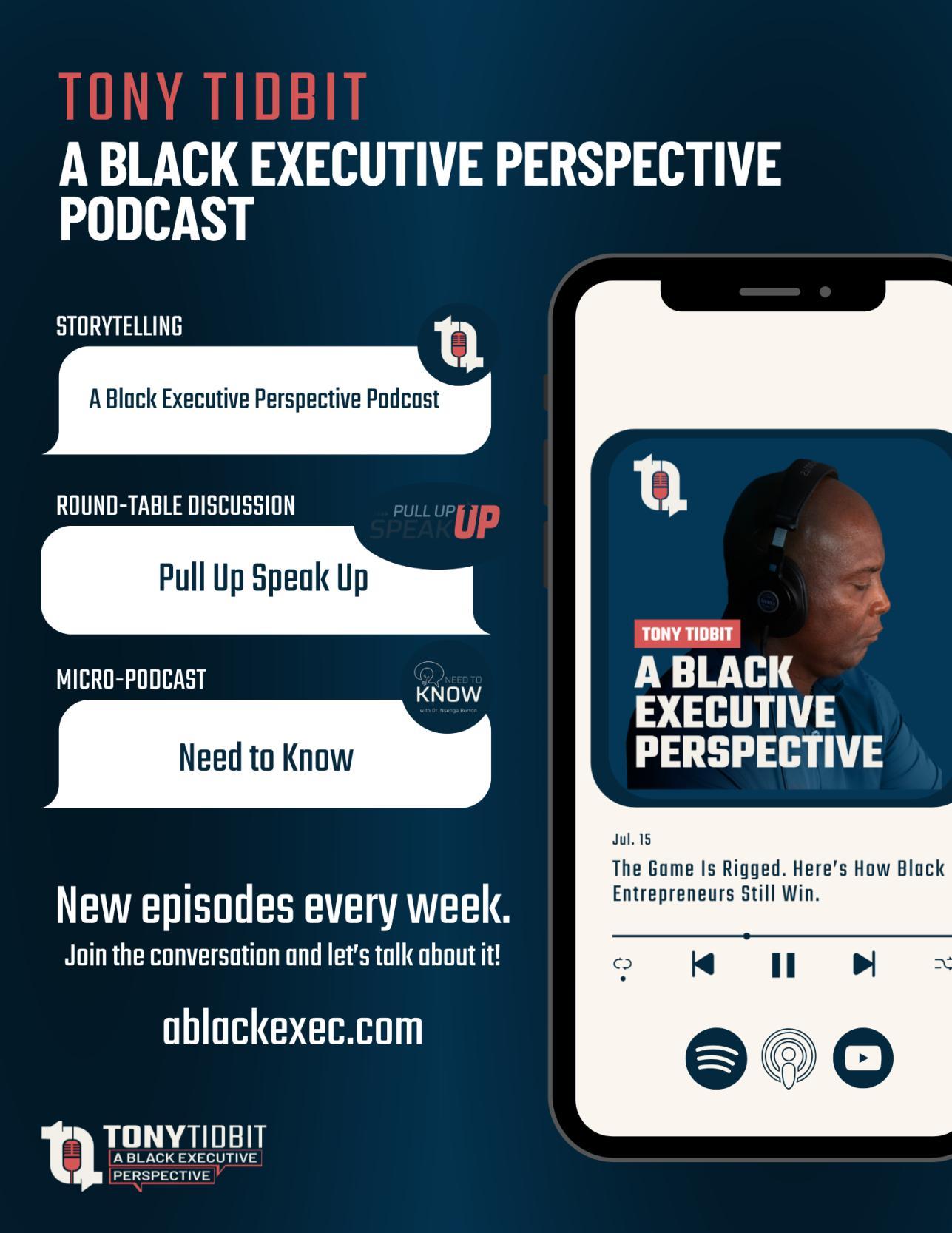

addressed.
Conversely, there are those who are specifically targeted by perpetrators. They include:
People with dependent personalities
• A person who puts a lot of value on “the good times” and easily forgives
• Anyone with a history of being abused in childhood or past relationships
spectives, and beliefs.

Essentially, they let their trauma become the baseline upon which they make all their decisions about everything. It’s the lens through which they see all of life, thereby letting it define who they are, the type of relationships they’re involved in, the work they do, and their overall sense of reality.
Mate poaching is the deliberate attempt to attract or seduce someone who is already in a committed romantic relationship. This can involve flirtation, emotional manipulation, or direct actions to disrupt the existing relationship.
• People with disorganized, anxious, or avoidant attachment behavioral styles
• People with the tendency to question and blame themselves, despite strong evidence that suggests they aren’t to blame
• Existing mental health concerns, such as depression, bipolar disorder, and anxiety
• People who suffer from separation anxiety
• People who are sensitive to rejection
For the perpetrator, it’s all about power, control, and the belief in their superiority over others. For the person being abused, they most likely intellectually recognize the situation for what it is, yet just can’t bring themselves to believe that they’re being abused, and thus, traumatized. What’s set in motion is the debilitating trauma bonding dynamic.
There are two types of trauma bonding.
The first type involves incorporating trauma into every aspect of a person’s life to the point that it dictates their feelings, per-
The second type of trauma bonding is a scenario many people are aware of but find hard to comprehend: the attachment an abused person develops for their abuser.
This dynamic is created when the abuser alternates between critical and fear-inducing behavior with moments of affection and remorse. The person being abused, despite the abuse showered upon them by their abuser, fully believes their abuser loves and cares for them. They also believe their abuser’s “sincere” protestations of regret and sorrow for their actions. For the person being abused, their belief based in fear is steadfast even though they intellectually know the abuse is going to happen again.
This sets into motion a relationship dynamic called “codependency,” wherein the abused individual modulates their behavior and actions so as to avoid upsetting or setting off an abusive episode by their abuser. The abused person lives their life constantly walking on eggshells, fearing another attack and possibly mortal harm. The underlying and overwhelming fear is that the abuser will reject and abandon them.
Within this second type of trauma bonding dynamic is a process that involves seven stages:
Love bombing the abuser praises and excessively flatters their target, essentially, preying on their victim’s emotions and there-


by creating a false sense of support, security, and stability.
Trust & Dependency the abuser tests their target to the point that the abused person begins to doubt themselves and begins relying on the abuser for validation.
Criticism the abuser begins the process of tearing down their target to weaken their sense of self-esteem, self-worth, and selfconfidence. This is coupled with love bombing and testing the abused person’s trust in the abuser.
Manipulation & Gaslighting the point of this is to get the abused person to doubt their sense of reality, primarily to get the abused person to believe that their perception of life is wrong and that their abuser is always right. When things go wrong, the abused person will blame themselves, never their abuser, and believe that they deserve whatever their abuser lays on them.
Resignation & Giving Up the abused person reaches a point where they no longer believe they have the capacity to stand up for themselves. In order to “survive,” their reaction is to please and fawn over their abuser, as well as others around them, in order to avoid conflict.
Loss of Self over time, the abused person loses their sense of identity and becomes dependent on their abuser for verification. In essence, the abused person becomes a slave to the abuser and is completely and emotionally dependent on their abuser for everything.
Addiction to the cycle of abuse the trauma bond becomes so strongly embedded that the abused person feels unable to leave

the abusive relationship because they now fully believe their very existence is dependent on keeping the cycle active.
Throughout the entire cycle, the abuser keeps their target reeled in with apologies, promises of not repeating their abusive behavior, and how much they love and support their target. None of it is real. What actually occurs for the abused individual is a sense of relief and calm, which creates a false sense of reconciliation, closeness, and safety. During this time, dopamine and oxytocin are released, which bring about positive feelings and hope. When an abusive episode occurs, though, dopamine and oxytocin are replaced by stress hormones.
This constant back-and-forth cycle eventually becomes addictive. The abused person goes down the rabbit hole of trauma bonding because their entire being craves the roller coaster of pain and relief, the high that occurs following the hurt. The outcome is that the abused person begins to mistake what they’re experiencing as love. The truth is that it’s never about love. It’s about the abuser having someone they can completely control.
Breaking free of one’s trauma bonding and the person or even group one has become embedded with requires professional therapeutic help. The emotional hooks are lodged so deeply in a person’s psyche that recovery often takes years. The term for this process is “post-traumatic growth,” which seeks to not minimize or dismiss the trauma, but to:
• shift the abused individual’s perspective so that they can begin to build a foundation for greater self-awareness and insight into who they are,
• see their abuser more clearly for what they are, and
• to begin the process of re-ordering their behaviors, wants, and needs.
The process of recovery is slow and can be painful as the abused person realizes the emotional facets of trauma bonding and how intensely they were manipulated. Shame, fear, self-criticism, and anger will come up to the point of possibly turning into self-abuse. This is why therapeutic support is crucial.
What an abused person can look forward to is a renewed appreciation of life, healthier relationships with others, seeing new possibilities for their future, the development of inner strength, and a more balanced, resourceful, and life-affirming sense of self. ●



At 36, Christopher Cox managed to live out his dream of working his way to Capitol Hill while serving as the chief of staff at the US House of Representatives. His example is the blueprint of what every man could aspire to.
By Bolling Smith



Normally, Mondays are used to begin the week. It is a fresh start to a set of goals. But for Christopher Cox, the Chief of Staff of Congresswoman Yvette Clark of Brooklyn NY, this Monday was more of a recovery day.
Congresswoman Clark served as the Chair for the 2025 Congressional Black Caucus Week (CBC) and Cox was her assistant. They spent Wednesday through Sunday playing host to the country’s Black elite and visitors to the District of Columbia for thousands of events and parties to celebrate Blacks in politics.
For Cox, the opportunity to serve in such a prestigious position at 36 came from an idea in youth. With a positive mindset and many supporters along with way, the Jackson State University
years in various positions and has had the privilege to be present for some very powerful meetings. He understands the beauty in the party.
Today Cox, as chief of staff, manages a team of ten in D.C. and also manages five more staff members back in the home district of Brooklyn. He covets the ability to impact people on all levels and understands the privileged that has been given to him to have such an impact on those he serves.
He sees what Blacks can become if they do the work to build their communities. And he believes the best days for Democrats are still ahead.
“I have seen democrats fight for their constituents in rooms and meetings where no one is there.” Cox continued, “I have
Cox wants to impress on any young man that is looking for his purpose to make sure they find something they can thrive in. He knows that he story is unique that he was able to succeed in a field that started when he was a teenager.
graduate knew that one day he would be sitting on top of Capitol Hill.
“I have been interested in government my entire life. As a kid in high school, I was in student government and service, so I always knew what I wanted to do,” Cox said.
Having purpose so early in life served as a guide on his next steps. Because Cox had a clear vision of his goals, he had a clear path to reach his goals. That meant he did not hang in the wrong circles. It meant he did not hang with the wrong people. It also meant that he served his purpose with action, by taking the right classes and doing the right things that would result in him getting what he wanted.
“I’ve dedicated my life to being a servant leader, and its helped make me the man that I am today,” Cox said.
Cox has served on Capitol Hill for the last eight
had a chance to see people, who do not get enough credit, fight for the good for those who are underrepresented in society.”
Those conversations is what fuels Cox to want to do more. Cox worked overtime to make sure that the CBC was successful for those who came to D.C. He understands the frustration that some people might have towards politics and Democrats in general right now.
“I always tell people to vote for the person, not the party. We


need to make sure that we have right representation in office, not just anyone,” Cox said.
He is not wrong. The consensus by Blacks towards the Democratic party glows with a frustration dealing with its platforms and policies. However, Cox still believes that the agenda of the party is what America needs, and what Black Americans can count on.
“Winning back the country starts at home. We need Black people to get engaged, as much as they can, at the local level for our agendas to get seen, heard, and voted on,” Cox said.
Cox, who hails from Mississippi, plans to return home to bring the fight of diversity, equal rights, and empowerment to the local people who need it the most. He also understands that Black America is going to have to return to its roots if the party is going to thrive in the midterm elections.
Some of the highlights of Cox’s career include his chance to work on Capitol Hill. He considers his experience to be a humbling thing because he knows that he could be doing something else. The idea that a 36, soon to be 37-year-old, works in the position he does.
“To be able to be in the same room as Minority Leader Hakeem

Jeffries and to be able to watch Representative Troy Carter conduct a meeting has truly been a blessing to me,” Cox said.
Cox also boasts being able to watch Vice-Presidential candidate Kamala Harris run for president as one of the highlights of his career.
“Watching her run for president reminded me of a conversation I had with my grandfather several years ago before he passed away.” Cox continued, “My grandfather encouraged me to always make sure that I looked out for the little man, to look out for our people, and to make sure that I advocate for those who have less.”
Cox wants to impress on any young man who is looking for his purpose to make sure they find something they can thrive in. He knows that his story is unique in that he was able to succeed in a field that started when he was a teenager.
He also wants people to know the true power they possess if they would only get involved in their local politics. With the Democratic party suffering from an all-time low in popularity, Cox and his fellow members of congress have their work cut out for them.
Inflation, job cuts, and artificial intelligence is hitting the Black community hard. And with the right doing everything in its power to eliminate history from the fabric of America, the future seems bleek for some.
But then there are people, like Christopher Cox, who understand the mission, who have seen several interactions of the struggle, and who remain steadfast that there is a brighter future ahead might be exactly what the country needs.
Cox’s possible future includes one day running for office. His political aspirations include running for office at the state level where he can have the most impact.
“The local level is where we need to fight if we have any chance of winning in D.C.,” Cox said.
After a busy CBC Cox should be recovering, but instead he is back on his grind to make sure his impact is felt to those who need him. Cox is a blessing to those who need him, in a time when hope is hard to come by. ●





Intimacy in the bedroom starts days earlier with thoughtful gestures that resonate with your partner mentally, get her in the mood physically, and allow you to use your manly sexuality to have her begging for more.
by Justin Roberts


It’s no secret that men like sex. What is even less of a secret is that women like sex, too. However, there is a huge difference between how men and women approach the art of wanting and enjoying sex. For men, the process of wanting sex is simple: we want it all the time. But with women, the process takes more time. And because men want it more, ultimately, we need to do a better job of creating an environment where women crave it more also.
There are several things men can do to excite women into wanting more sex. The overall process is 50 percent mental and 50 percent physical. If you want to create a better bedroom experience with your lover, you will need to do both equally.
If you want to create an inviting space for her to get busy, you first need to start with her mind. Pay attention to her needs and find the time to listen to her when she speaks. Being on your cell phone constantly looking at it can easily irritate her, so put it down. Remember: magical sex starts way before you get to the bedroom. You can begin foreplay by doing thoughtful things for her like opening her car door or pulling her seat out when sitting down to dinner. Great relaxing conversation always sets the right mood. Basically, you need to become more attentive and way more receptive to her desires and needs outside the bedroom if you expect to please her in the bedroom.
Women expect some level of stimulating conversation when in a relationship. Today, some men might consider texting in broken sentences a form of communication. You might be surprised to find that women loathe constant texting without some form of verbal communication. Great communication includes periodic phone calls to keep the flame alive and interest going.
Also, make sure you offer different levels and types of communi-

cation and be authentic, not superficial. Women see right through to a man’s desire to just have sex and the last thing they want to feel is that they’re only a means to an end. So, talking about work is cool but find other things to discuss as the evening goes on, especially those things that are of specific interest to her or the both of you.
The art of understanding how your partner communicates their love is one of the best ways to create more excitement in the bedroom. For women, if they’re mentally into you, they’ll become just as into you physically. Knowing that, you need to find out how to best provide them with the things that they want. There are five love languages: words of affirmation, quality time, physical touch, acts of service, and receiving gifts. Once you understand her love language, create the environment to provide for those needs. It will help you get what you want faster.
These are just a few suggestions to mentally put her in the right place to receive pleasure. Women also need to have a relaxed, non-stressed environment if they are going to be able to have the space to need or want physical pleasure. So, if you have drama with the ex, if you live with your mom, or if you cannot afford to provide for a safe, fun experience, you may want to wait until these things are cleaned up.
After you have created a meaningful situation for her mentally, you still need to work on the physical aspect of pleasuring your mate. Women climax during intercourse only 25 percent of the time. If you’re going to create more desire in the relationship where she craves you physically, you are
Understanding what women respond to is the key to getting them to have more sex.



going to need to understand her actual needs in the bedroom.
Women want to be romanced. The reason you had to sit through five rom -coms before she’ll have sex with you is because she wants to revel in the fantasy. Women want to feel appreciated. This means that you need to take your time and provide an experience that’s lasting. Consider a soothing massage to set the tone. Physical touch starts way before the bedroom, but a massage sets the tone for what is to come. Massaging her allows you to touch her all over and for her to relax and mentally prepare for sex.


Now the act! Take her hips and place them on something soft. A pillow or folded towel so you can lick on, around, and under her clitoris. Make sure you lick as she moves. Follow her lead so she can develop her pleasure until she climaxes. It takes about twenty minutes of stimulation for a female to climax, so understand that going into it. If you can master this, you will become superman to her in the bedroom, thus increasing her desire for you physically.
If you are going to create a meaningful sexual experience, you’ll need to broaden your skills concerning how you provide pleasure. Because women climax only 25 percent of the time through intercourse, adding cunnilingus to your game is going to increase her chances of climaxing.
First, the science. A woman’s clitoris has about 6,000 to 8,000 nerve endings and its only purpose is pleasure! Only about a quarter of the clitoris is visible outside the body. There is an internal female erectile network, all comprised of erectile tissue. The clitoral shaft has “legs” that extend, and under the outer labia are two big wads of engageable erogenous tissue called the paired vestibular bulbs. All of this means that a woman’s body is primed for pleasure if you know what you are doing.
The art of seduction is the key to having more sex.
The one known fact that women all seem to share is that size does not matter. If a man can use his tool the right way, he can satisfy his lover. Make sure you understand her favorite positions and how she likes to be treated in bed. Some women like seduction and some women like romance. The better you understand her physical needs, the more times you’ll have her desiring sex with you. Remember, half the battle was getting to this point, so capitalize on that and take things to the heights of ecstasy for both of you.
These are just some of the tips that can have your plus one wanting more and more of you, naked, if you know what I mean. So live and learn and create the dream for her so


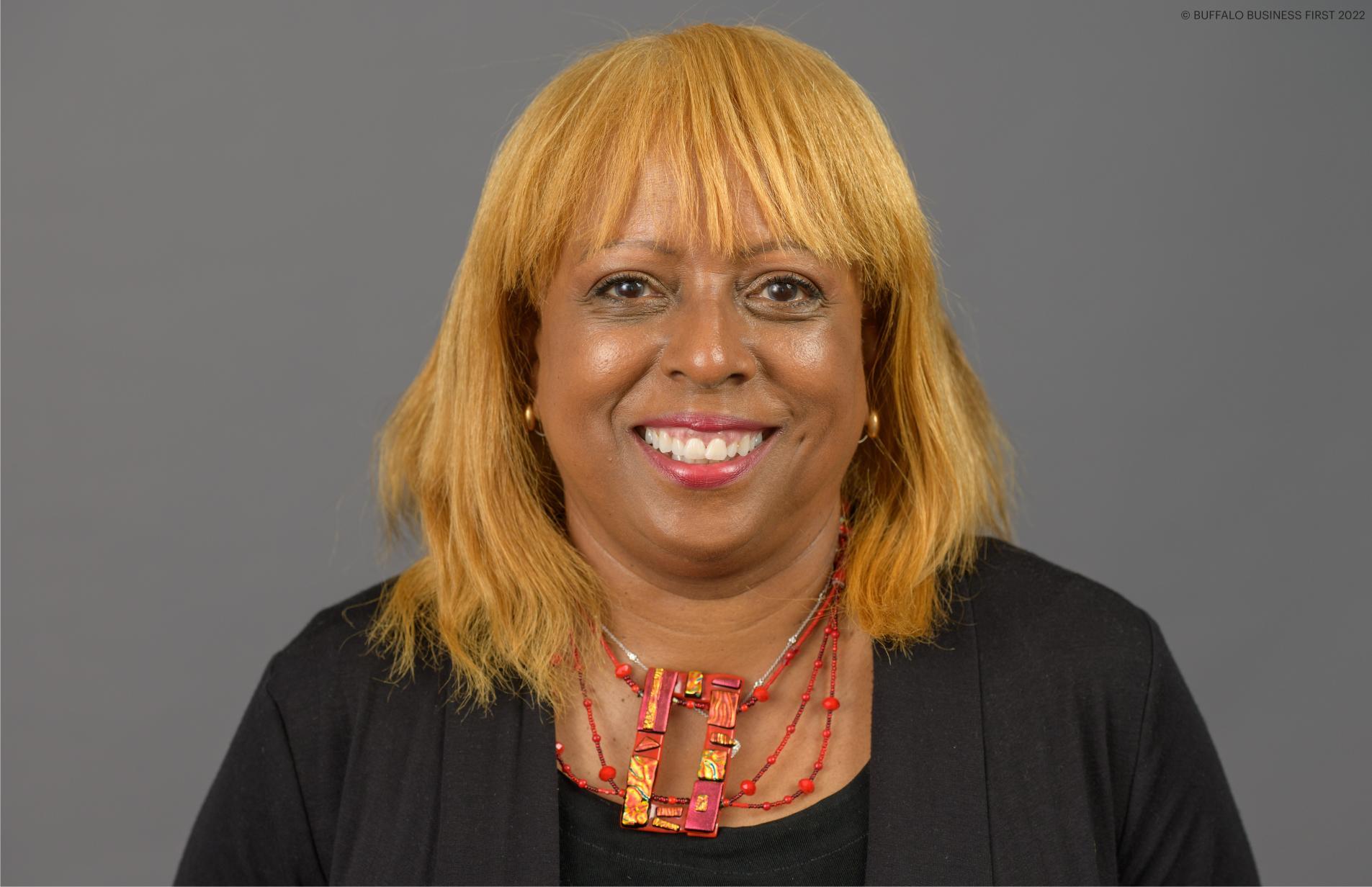
Francesca B Mesiah is a passionate advocate for issues impacting marginalized communities, directing her professional and personal efforts toward this calling. As Manager of Workforce Development, she develops strategic relationships to expand access to career opportunities at Kaleida Health in Buffalo, NY. Serving as a liaison between Kaleida and workforce development partners, such as colleges, schools, and community-based organizations, she aims to increase the pipeline of healthcare workers.
Get to know people who are making a difference in their organizations and in their careers.
By Bilal S. Akram
In her role, Mesiah is an active member of Kaleida DEI and holds the position of Executive Director of the Near East and West Side Task Force, a collaborative initiative involving community partners. She also hosts Great Lakes Health Radio Show, providing education to the community on wellness topics.
Mesiah’s advocacy efforts began at age 15 with the NAACP Buffalo Branch. She currently holds a position on its Executive Committee and serves as Chairperson of the Health Committee. Additionally, she chairs the NAACP NYS Conference Health Committee.
Mesiah is a member of Alpha Kappa Alpha, Gamma Phi Omega Chapter, in Buffalo, and serves on numerous Boards.

Rick Wilcox is a seasoned fire service leader, educator, and community advocate whose career reflects a lifelong commitment to public safety and youth empowerment. Rising from the East Cleveland Fire Department to serve as Fire Chief for both East Cleveland and Sandusky, Wilcox made history as the first African American Fire Chief in Sandusky. His leadership is marked by operational excellence, collaboration with labor and city officials, and a vision for stronger connections between fire departments and the communities they serve.
Beyond the fireground, Wilcox has poured his energy into shaping the next generation. He directs the Warrensville Heights High School Fire Technology & Public Safety Academy and teaches at the Auburn Career Center Fire Academy, guiding students toward careers in public safety with a focus on discipline, resilience, and service. Through the Warrensville Heights Fire Cadet Program, as well as his longtime involvement with the East Cleveland Police Athletic League, he has mentored hundreds of young people, offering them structure, encouragement, and pathways to success. His volunteer work also includes organizing food pantries, senior outreach programs, and civic events that strengthen community ties.

Rick Wilcox is a proud member of Omega Psi Phi Fraternity, Incorporated, Zeta Omega Chapter of Cleveland, Wilcox embodies the fraternity's values of manhood, scholarship, perseverance, and uplift.
Charma D. Dudley Ph.D., FPPR Dr. Dudley is passionate about promoting mental health awareness and educating BIPOC communities, about mental health conditions to ensure that barriers are eliminated and quality, evidence-based treatments are available. Dr. Dudley is a licensed psychologist and employed as the Associate Director of Behavioral Health Services at Carelon Behavioral Health, under Elevance Health. She currently leads the Zero Suicide Taskforce for Carelon Pennsylvania and also serves on PA’s Black Youth Suicide Prevention committee.
Dr. Dudley was recently selected for Pennsylvania’s City & State 2025 Trailblazers in Healthcare. In private practice, Dr. Dudley specializes in the treatment of individuals with depression and anxiety. Other areas of practice include clinical consultation/training in cultural competency/equity in behavioral health care, suicide prevention, psychodrama and anger management.
Dr. Dudley is also the author of Treating Depressed Children published by New Harbingers. Dr. Dudley serves as the Board Vice President for NAMI Keystone Pennsylvania (National Alliance on Mental Illness) and previously served six years on the National Board of Directors for NAMI. Dr. Dudley has appeared on radio and television programs educating the community on mental health issues and participated in the How Right Now awardwinning mental health communications campaign sponsored by the CDC
to help address feelings of stress, grief, and loss. Dr. Dudley was featured in the WQED Multimedia documentaries, Examining the Shortage of Mental Health Care Professionals and Alone: Isolation Hurts. Dr. Dudley is a member of AKA, Alpha Alpha Omega, graduate chapter in Pittsburgh, PA.
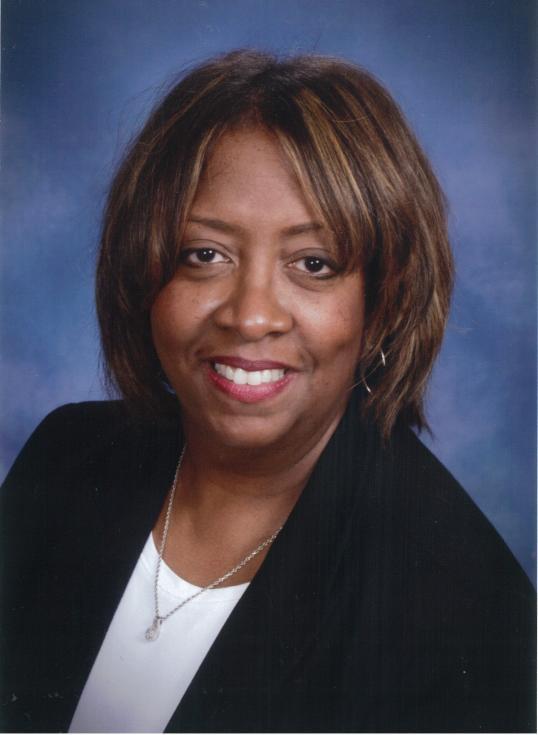

What can compare to the piercing sting of a mother's loss of her child? It is a pain that cannot be matched. Barbara Arnold Massey takes readers on a memorable journey to healing from one of the most jarring, devastating moments of her life the sudden loss of her son, comedian David Arnold.
Somewhere There’s A Place For Us is a beautifully written, deeply personal, and profoundly moving account of a mother’s love, loss and resilience.
Barbara Massey’s story of losing her son, comedian David Arnold, is both heartbreaking and inspiring. With unflinching honesty, she shares her struggles with grief, her moments of despair, and her journey toward healing.
The book is not just a memoir about loss, it’s also a celebration of life, love, and the human spirit.
Massey’s story will resonate with anyone who that experienced grief, but it will also inspire those who are looking for a reminder of the transformative power of hope and resilience.
The best part of the book is the personal recaps from David’s friends and family, which offer a touching glimpse into his life and legacy. It is clear that David was a remarkable person who touched many lives. This book confirms that he is truly missed. ●





In a world of copycat music nothing seems to last. Jeff Washington changes that with his blend of blues and R&B that feeds the soul and is music to the ears.
Hailing from New York City and now a longtime resident of Philadelphia, Jeff Washington is a dynamic force in the world of blues and beyond.
With a career forged through years of dedication, he's a true triple threat: an excep-


Written by JOHN O. HORTON JR.
tional guitarist, a compelling vocalist, and a prolific songwriter. Washington’s masterful guitar work effortlessly navigates a diverse musical landscape, showcasing his prowess in Funk, Blues, Jazz, Rock, and R&B. His talents extend to keyboards and songwriting, creating a truly dynamic package that's evident in every performance.
He honed his formidable guitar technique and theory under the tutelage of legendary guru Dennis Sandole, whose esteemed alumni also include Pat Martino and Mike Sembello.
His extensive resume speaks volumes, boasting concert and tour appearances with an impressive roster of iconic artists such as Melba Moore, Albert King, Chaka Khan, Freddie Jackson, Mary Wells, and Dee Dee Bridgewater, among many others.
Washington has also graced national television screens, with appearances on shows like All My Children, One Life to Live, Showtime at the Apollo, The Pat Sajak Show, David Letterman, and The Arsenio Hall Show
His musical contributions further extend to the silver screen, with songs featured in the independent film The Life and Times of Charlie Putz.
Most recently, Washington continues to captivate audiences with his latest single, Two Dollar Bill, further solidifying his place as a vital contemporary blues artist. ●





With a new year comes new cars. Here are a few SUVs that stand out among the crowd and fun to look at. Fashion doesn’t just mean what you wear, it also means what you drive.


The Scout Terra pickup truck and Scout Traveler SUV are prototypes of the first models to wear the Scout badge in 44 years, and they aim to mix new technology with what we think are the best kinds of old-school sensibilities. Scout is a division of Volkswagen focused on electric vehicles inspired by the 1970s International Scout 80 pickup truck and International Scout II SUV.
These rugged, retro EVs have a claimed 0-to-60-mph time of 3.5 seconds, a 7,000-pound tow capacity, and a 350-mile driving range. An optional “Harvester” version gets a gas-powered range extender for up to 500 miles of range. Scout owners will find real buttons and knobs for infotainment and climate control, traditional exterior door handles, and even an optional three-person front bench seat. Both Scout models are based on an all-new, rugged, body-onframe design that’s not shared with other electric vehicles from Volkswagen and Audi.


Startup automaker Lucid’s second vehicle is the 2025 Gravity SUV. The automaker promises an extremely robust range of more than 440 miles, seating for up to seven passengers, a ton of cargo space, and a starting price below $80,000. If that’s not enough, Lucid says the Gravity will be able to sprint from 0 to 60 mph in under 3.5 seconds, which wouldn’t be too surprising considering the Air sedan’s outrageous performance. Price: $79,900-$94,900

Volvo’s new flagship is a seven-passenger, three-row, all-wheel-drive electric SUV called the EX90. It’s equipped with cuttingedge safety technology, including a driver monitoring system that can pull over and call for help if a driver becomes unresponsive, and a lidar sensor to support its advanced driving assistance systems. recycled materials and hidden lighting. public DC fast charging station. According to Volvo, the EX90 can drive up to 300 miles on a charge.



For the 2026 model year, the Subaru Crosstrek will be available with a hybrid powertrain. It is powered by a typical Subaru 2.5-liter “boxer” engine, augmented by a 1.1-kilowatt-hour battery pack. Like the regular Crosstrek, it also has a continuously variable transmission. The total system output is 194 hp, which is 12 hp more than the nonhybrid 2.5-liter engine. unresponsive to warnings while using adaptive cruise control. Price: $27,000-$35,000 (estimated)

The redesigned Toyota RAV4 is offered strictly in hybrid and plug-in hybrid forms. It introduces new trim levels, and steps up its game for comfort, convenience, and safety. The hybrid powertrain produces 226 combined horsepower, and for the first time, it is available in a front-drive configuration. The AWD version has even more oomph, with 236 horsepower. from 42 miles to 50 miles. The PHEV is now available in four trims, adding the Woodland and GR-Sport. comprehensive suite of safety and driver assistance features. Price: $30,000-$50,000 (estimated)






After almost a decade without a major update, Nissan has introduced the redesigned Murano, the brand’s midsized two-row SUV. The new Murano features smoother styling similar to Nissan’s all-electric Ariya. Nissan’s dependable V6 engine and idiosyncratic CVT have been replaced with a turbocharged four-cylinder and 9-speed automatic transmission. steering wheel, panoramic roof glass, and multicolor LED ambient lighting inside. Price: $40,470-$49,600

For its second generation, the Hyundai Palisade goes big, increasing its size, fuel efficiency, premium features, and off-road capability. The base engine is a 287-hp, 3.5-liter V6 paired to an 8-speed automatic transmission. This will be offered in front- and all-wheel-drive configurations, with a 5,000-pound maximum towing capacity. XRT PRO trim builds on the previous XRT to create an adventure-ready version with heightened off-road capabilities. Price: $38,935–$58,280
